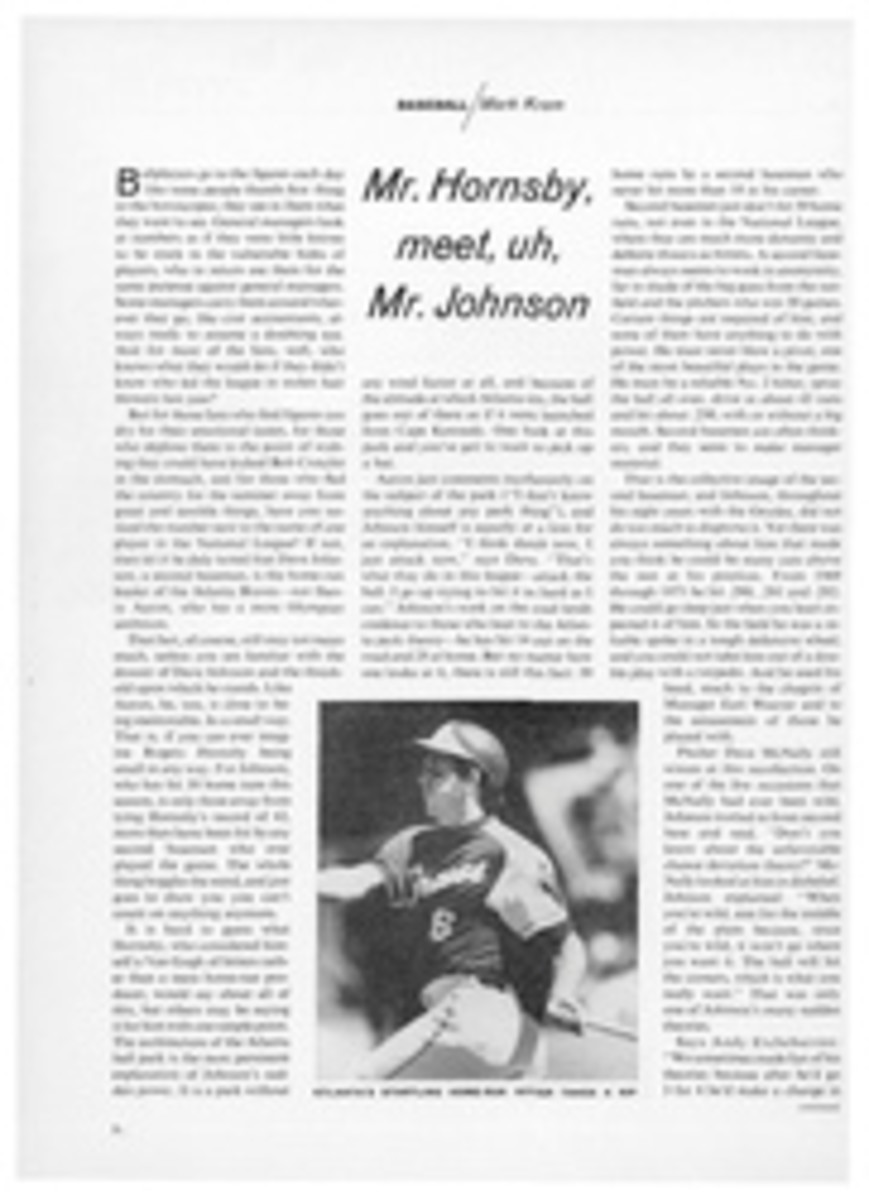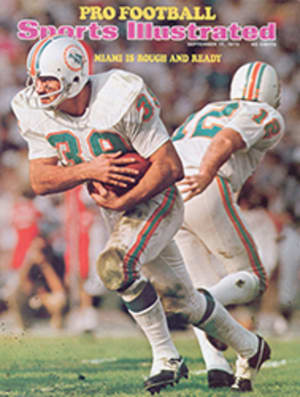
Now he's throwing a wet one, too
The brave men of sport—the foolish ones, some would say: the sky divers and the Indy drivers, and lately the professional bowlers—pass their days at the edge of eternity. The sky is soft but the ground is hard, like the Brickyard and like the wood of the bowling lanes and the plastic of the balls. In bowling that means trouble. And what is being done about it—the solution, literally—means more trouble. In professional bowling circles these days the following is the subject of a bet: Which bowler will be the first to blow up his motel room?
The solution, the most well known of many being used, is MEK—methyl ethyl ketone. It is a solvent, as are the others, and the pros are using it to soften plastic bowling balls. But MEK is also toxic and highly flammable. Breathing it can cause brain damage. As one cautious pro says, "I'd rather carry a hand grenade in my pocket than use that stuff." So he uses a diluted mixture. He wants to live, but he also wants to make a living.
This is why it all began, say some of the pros. By 1970 a new, harder finish was being used to cover the lanes on the pro tour. It was much less flammable than the old finish, and much more durable, which meant money saved in maintenance and insurance. But bowling balls were no soft touch either. Rated for hardness on a zero to 100 scales, very few softer than 80 were being made. And the hard balls on the hard lanes caused what should have been good shots to skid. The ball wasn't grabbing as it had. Good bowlers were having trouble hooking. Enter a Munster, Ind. pro named Don McCune who said he could not even scratch the ball with a knife. "And the alleys were too damned hard," he said.
McCune went looking for a substance that would soften a bowling ball, and last November he got a list of solvents from a chemist with one of history's more appropriate names—John Supple. McCune will not reveal which one of the solvents he picked, but he got a five-gallon can of whatever it was and dropped his ball in it overnight. Next morning he could indent the ball's surface with a thumbnail. He promptly took the ball to the Stardust Lanes in nearby Hammond, where he rolled a fine 763 series. "Stardust is a tough house," McCune says, "and I couldn't wait for the winter tour to start."
A bowling lane is 39 boards wide, and until that day McCune's ball had been hooking over only three or four boards at most. On this day it was hooking 10 or more. McCune says, "When the hard ball would hit the pocket, the right spot for a strike, it would deflect from the one to the three pin, then take the five and nine, in that order. Often a pin would remain standing. But this ball hit the one and the three and crashed on through. It had triple the hitting power."
McCune had won but two Professional Bowlers Association tournaments in his 10 years as a pro. Now he set out on the winter tour of 1973. He won at Winston-Salem. The following week he won at Milwaukee. "The soft ball gave me a lot of confidence," he says. "That's half the battle in sports."
The summer tour began and McCune went to Downey, Calif., where he had trouble controlling his hook with the soaked ball. Since no one else had a softy, he figured he might as well try a regular ball, and he won with that. But he returned to the soaker. Three meets later, at the Fresno Open in late June, he won again, with a 248 average over the last eight games. "Everyone was going crazy," McCune says. "They suspected-something, so I told them I was using a soft-surface ball. But that's all."
McCune's traveling partner was and is Jim Stefanich, who claims not to have become curious over his roommate's success. "I don't pay any attention to anyone's bowling balls," he says, but Stefanich had been looking into the hardness problem on his own. Particularly, he spoke with a 48-year-old Californian named Bill Taylor, who uses solvents in his car polishing business and graciously admits, "I am the fountainhead of knowledge in bowling." (His book Fitting and Drilling a Bowling Ball is being published this week.) He told Stefanich that MEK could destroy his lungs in a motel room in three or four hours, so Stefanich chose a slightly less dangerous compound—he is not telling which—and Stefanich was soaker No. 2.
At Fresno in June bowler Tim Albin asked Taylor for advice, and half an hour later pro George Pappas said, "Bill, do you know what this soaking business is all about?" Before the day was out seven more players asked the question of Taylor, who said, "At this rate of desecretization [sic] it won't be long before an Eskimo living outside Fairbanks, Alaska will blast his wife, his igloo and his bowling ball into the Bering Sea."
The Redwood City Open followed Fresno, and it was the first big soaker meet. McCune won, his second back-to-back combination of the year. Two weeks later, at the Houston-Sertoma Open, 22 of 24 finalists were soaking. The qualifying average was 214, or eight points higher than the previous year, when the lanes were considered easier. Representatives of San Antonio's Columbia Industries, a leading bowling ball manufacturer, rushed to Houston to find out what was going on. They returned to the factory and made a batch of balls of a 55-to-60 hardness. The balls were all presoftened, and many of the pro bowlers tried them in the following weeks. Pappas, for instance, could not control his hook with a soaked ball, but he finished third in the PBA National Championship at Oklahoma City with the Columbia ball. It was easier to control than the soaker which, he says, "swerves in that last 20 feet as though it hit a brick wall." But regularly now he uses the soaker, which has helped him five pins a game. He says, "If you're bowling good, it's just like shooting fish in a barrel."
McCune, of course, had a head start, and Pappas says, "He's worked it to a science." In 1971 McCune made $16,990 on the tour and in 1972 $23,828. So far this year, with the fall tour still to come, he leads the PBA with $61,055.
But even with earnings like that the soaked ball is not the only lane to bowling riches. For one thing, it does not seem to work too well for southpaws, who comprise fewer than 10% of professional bowlers. Their side of the lanes is less worn down and more oily—not so good for a really soft ball. The winner two weeks ago at Oklahoma City, which ended the summer tour, was a lefty, Earl Anthony. He used one of the new Columbia soft balls, not a soaker, but he says, "I think I would have won with a regular ball. I never soaked a ball, but I suppose you just get a bucketful of chemicals." Right.
So that is how it all washes out. Most of the pro bowlers are soaking now, and it appears that the level of scores is rising. But the novelty is over. Soon, even with the use of solvents, the professional tour will again be evenly competitive and skill, not solvents, will once more be paramount. As one soaker says, "The soft ball magnifies everything. It makes everyone a little better, but it won't make a superstar of a bad bowler. Even if we throw oranges and apples down the lanes the good bowlers are still gonna win."
PHOTO

